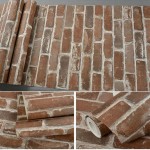Installing Laminate Flooring Transitions On Concrete Floor
Laminate flooring offers a cost-effective and aesthetically pleasing alternative to hardwood. However, achieving a professional finish requires careful attention to transitions. These pieces bridge the gap between different flooring surfaces or cover expansion gaps, ensuring a seamless and visually appealing result, especially when installed over a concrete subfloor.
Understanding Transition Types
Several transition types cater to different scenarios. T-moldings join two flooring surfaces of equal height, such as laminate meeting another laminate section in a doorway. Reducer strips accommodate varying floor heights, bridging the gap between laminate and a lower surface like tile or carpet. End moldings provide a clean finish against walls, sliding glass doors, or other vertical surfaces. Stair nosings offer a safe and attractive transition on steps. Thresholds or saddle moldings are commonly used in doorways to create a smooth passage between rooms.
Preparing the Concrete Subfloor
Before installing transitions, the concrete subfloor must be properly prepared. This ensures a level and stable base for the laminate flooring and the transitions themselves. Any existing flooring should be removed, and the concrete surface should be thoroughly cleaned. Cracks or imperfections should be filled with a suitable concrete patching compound, and the entire surface should be leveled to prevent unevenness in the finished floor. Moisture is a significant concern with concrete subfloors. A moisture barrier, such as 6-mil polyethylene sheeting, should be installed over the concrete before laying the underlayment. This protects the laminate flooring from moisture damage.
Acclimating the Laminate Flooring and Transitions
Laminate flooring and transitions are susceptible to expansion and contraction due to temperature and humidity fluctuations. To minimize this, acclimation is crucial. Prior to installation, both the flooring and the transitions should be left in the room where they will be installed for 48-72 hours. This allows the materials to adjust to the room's ambient conditions and reduces the risk of warping or buckling after installation.
Installing the Laminate Flooring
With the subfloor prepared and the materials acclimated, install the laminate flooring according to the manufacturer's instructions. Ensure the appropriate expansion gap is left around the perimeter of the room. This gap allows for expansion and contraction and prevents the flooring from buckling. The size of the gap will depend on the specific product and the manufacturer’s recommendations. Maintain consistent spacing between planks for a professional appearance.
Measuring and Cutting Transitions
Accurate measurement is essential for a seamless fit. Measure the length of the transition needed, using a tape measure. Mark the transition piece carefully with a pencil or marker. For cutting, a miter saw provides the cleanest and most accurate cuts, especially for angled transitions. A hacksaw or fine-toothed hand saw can be used, but extra care must be taken to ensure a straight cut. When cutting, always wear appropriate safety glasses and gloves.
Securing the Transitions
Transition pieces are typically secured using one of two methods: adhesive or track systems. Adhesive installation involves applying a construction adhesive, such as liquid nails, to the underside of the transition piece before pressing it firmly into place. Track systems involve installing a track on the subfloor, into which the transition piece is then snapped or slid. The choice of method depends on the specific transition type and manufacturer's recommendations. Some transitions may also utilize pre-attached adhesive strips for easier installation.
Finishing Touches
Once all transitions are installed, inspect the flooring for any gaps or irregularities. Ensure that all transitions sit flush with the flooring surface. Clean up any excess adhesive or debris. For a professional finish, consider using color-matched caulking along the edges of the transitions to create a seamless appearance and prevent moisture or debris from entering the gaps.

Installing Pergo 4 In 1 Transitions On Concrete With No S

Vinyl Plank Transition To Concrete

A Complete Guide On How To Install Laminate Flooring Concrete

How To Install A Carpet Vinyl Transition Strip On Concrete

Installing Laminate Transitions Step By Instructions

How To Install Vinyl Flooring Transition Strip Lvp Moulding

Installing A Transition Strip Into Concrete

How To Easy Install Laminate Flooring Transition Strips With Track On Wood Or Concrete Diy

Installing Laminate Transitions Step By Instructions

Installing Laminate Flooring Finishing Trim And Choosing Transition Strips
Related Posts








